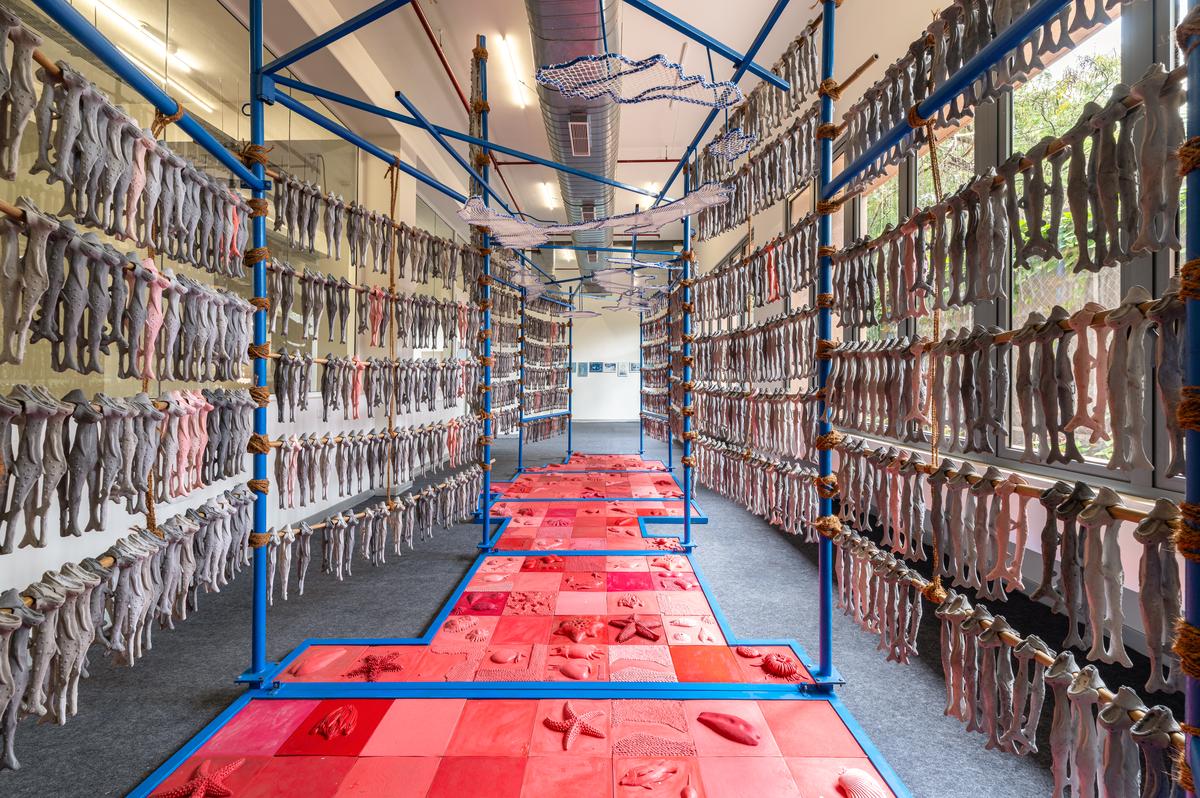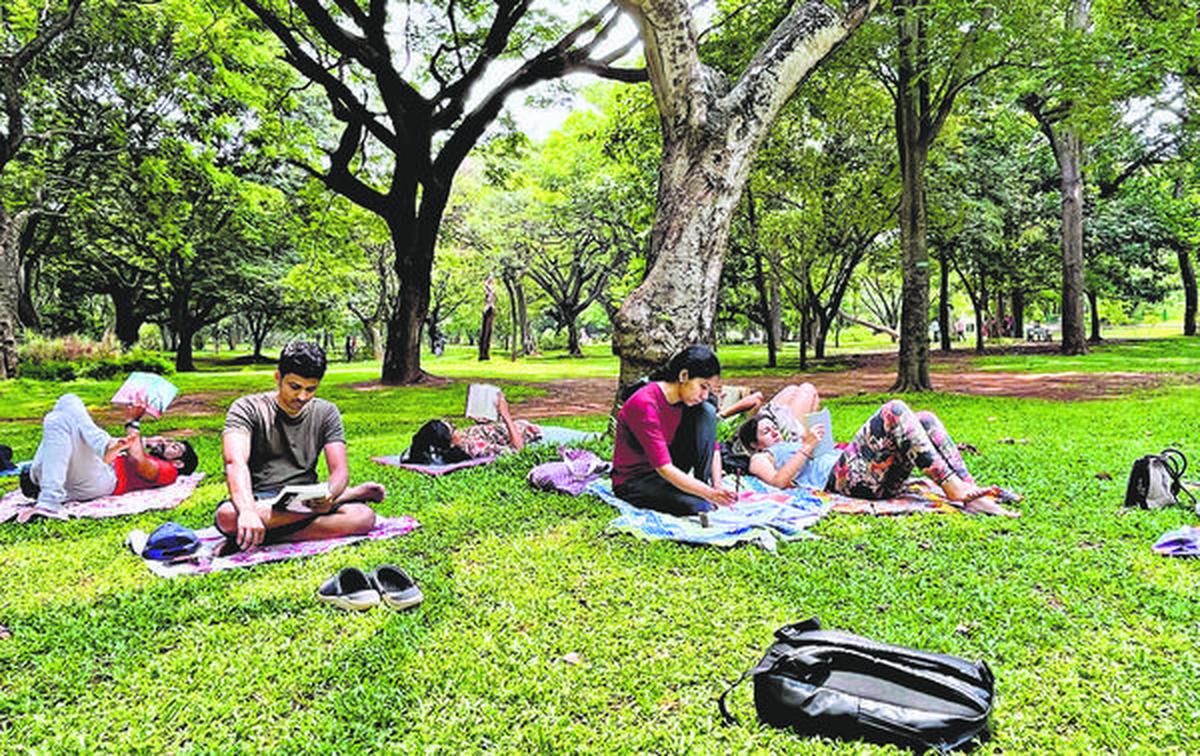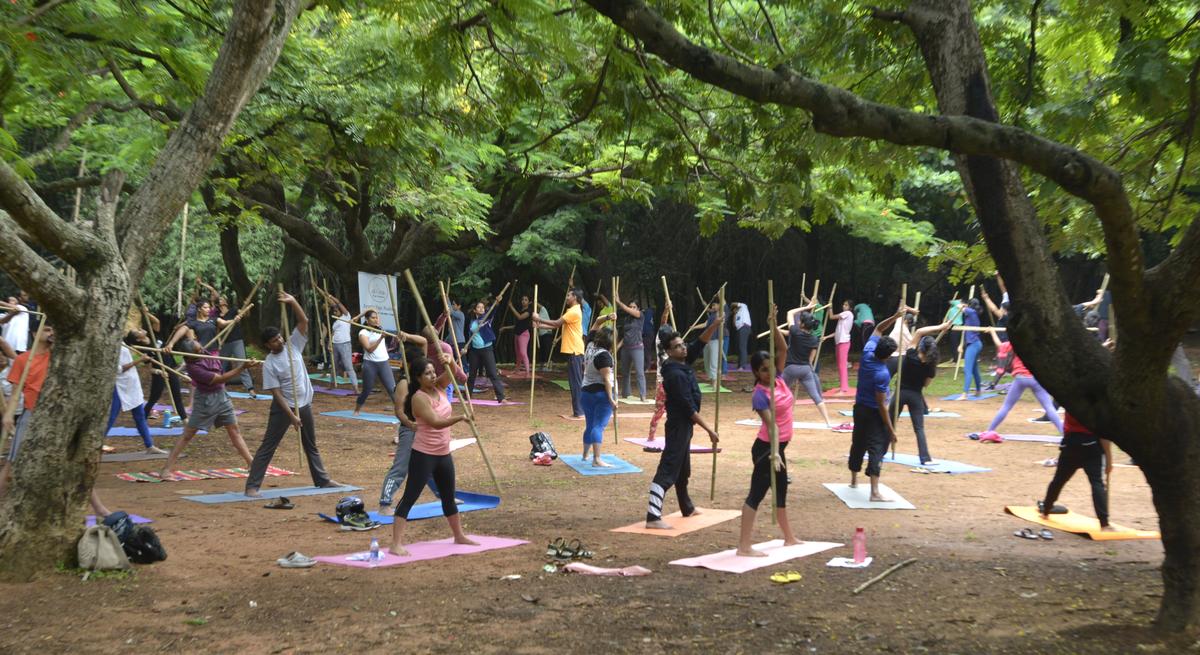Tree of Treats, a weekend home cafe located at Kowdiar, Thiruvananthapuram, comes to life at five on Friday evenings. The fairy lights wrapped around the name board, patio furniture arranged on the front porch, and wobbly puddings soaked in sauce or coated in toasted coconut welcome customers to this makeshift eatery.
The place is an extension of Treesa Joy and Arun Antony’s home. If you listen carefully, you can hear three-year-old Anthoy as he runs around the residence.
Arun and Anthoyi at Tree of Treats
| Photo Credit:
SPECIAL ARRANGEMENT
The evening cafe, as Treesa describes it, began in July, four years after she started a takeaway service exclusively for puddings. “Initially, we sold puddings just on the weekends and then we hired an employee to meet the demand during weekdays,” says Treesa, who is also a full-time corporate employee.
Also read: Casamigo in Thiruvananthapuram serves a blend of international flavours in a cosy bistro setting
Her decision to prepare puddings, while staying away from the “baking trend,” has an emotional reason. “I am from Ponkunnam in Kottayam. At home, we used to serve puddings to our guests, especially caramel pudding, which my mom made often. She passed away in 2020. She was a very hospitable lady and with Tree of Treats, I feel her presence,” says Treesa, who was not particularly fond of cooking earlier.
Puddings available at Tree of Treats
| Photo Credit:
SPECIAL ARRANGEMENT
The Tree of Treats menu has caramel pudding, tender coconut pudding, and sticky toffee pudding. They also prepare ginger-lime concentrates and brownies, on pre-order.

The puddings are sold in two portion sizes, 100ml and 500ml, with prices starting from ₹65. The ingredients are locally sourced, and Treesa is helped by two employees. Around 20 litres of each pudding are made every day.
The tender coconut pudding, topped with bits of toasted coconut, currently sells like hot cakes. Gelatin is used as the setting agent to give slight firmness to the pudding. The jiggle of the pudding in the spoon is followed by a subtle taste of tender coconut and slight crunch from the toasted coconut crumbs. “I made the tender coconut pudding for the first time on my first wedding anniversary in June 2020,” says Treesa with a smile.

Tender coconut pudding from Tree of Treats
| Photo Credit:
Nainu Oommen

The sticky toffee pudding, which has sticky, date cake soaked in caramel sauce, topped with a scoop of vanilla ice cream, is also popular. The ice cream with the moist cake make for the perfect bite. “I prepare this cake, while the other desserts are made without my supervision sometimes,” says Treesa, who joins her staff in the kitchen before logging in for work and jumps back in right after duty.

Sticky toffee pudding topped with vanilla ice cream from Tree of Treats
| Photo Credit:
Nainu Oommen
“I don’t have a sweet tooth,” says Treesa, who uses Arun to try out her “experiments”. “He was working in Bengaluru before he moved to Thiruvananthapuram. He helps with the business side of the cafe, and his move is what allowed us to start a dine-in facility,” says Treesa.
“I want to introduce fruit salads and other fruit concentrates in our menu; we also plan to look at sugar-free dessert options moving forward,” says Treesa. She adds, “Ultimately, we aim at a small outlet of our own, where takeaway and dine-in are possible.”
Tree of Treats is open from Friday to Sunday. Time: 5pm to 10pm. Contact: 9169666866





















